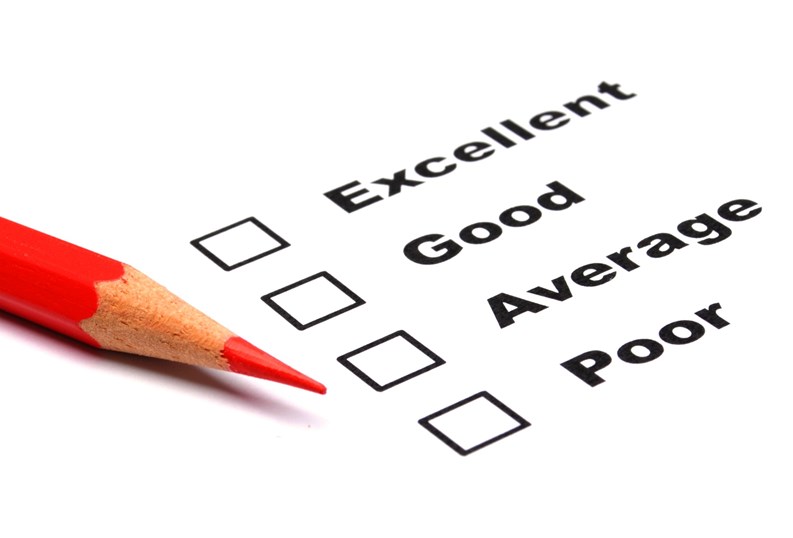A multifamily building or association is like a small city in many ways; there’s always something happening beneath the surface, from budgets being drafted to maintenance being scheduled, to vendor contracts being reviewed. To the residents, everything seems to hum along effortlessly—but behind the scenes, the board and management team are working together to make sure the machinery stays in motion.
A crucial part of that work is conducting regular performance reviews of a community’s property management. Strong boards don’t wait for signs of trouble—they check in, ask the right questions, and ensure that their management team knows the community’s expectations, is consistently meeting them, and striving for improvement.
A Fast-Paced Field
Even before the pandemic upended the way people live and work in multifamily communities, property management as an industry and profession was changing fast. Technology has of course been a primary driver of those changes, but shifts in the social order, evolving demands of boards and residents, and the expanding range of amenities offered in many buildings and HOAs all play a role as well.
That said, there are still fundamental services and support that a building or HOA should expect from its manager. As the landscape of property management continues to evolve—shaped by technological advancements, shifting social dynamics, and heightened standards from boards and residents—it is crucial for communities to ensure that their management team adapts accordingly. Keeping a community well-managed requires more than just routine oversight—it demands a dynamic, proactive approach. Boards should actively engage with their management teams, not just to evaluate performance, but also to identify opportunities for growth.
By prioritizing transparency and responsiveness and refining strategies where needed, boards can ensure that management simultaneously meets expectations and continuously evolves to enhance efficiency, communication, and overall quality of life.
Great Expectations
In order to identify and rectify management problems, it helps if both the terms of a manager’s role and the board’s expectations are laid out explicitly from the outset. The more precisely the manager’s job is defined, the easier it is to say with certainty that something has gone off track—and the easier it will be to right the ship. And a hands-on board should be able to deftly spot when it is not receiving the service it’s paying for.
Thomas Chilenski of Cedarcrest Property Management in Fairfield, New Jersey, emphasizes the importance of clearly articulated expectations between management and boards: “Communication is the key,” he says. “In addition to regularly scheduled meetings, management should be sending weekly or bi-weekly updates to their boards. The board needs to be honest with their management team and provide realistic goals, deadlines, and expectations for them. In turn, management must be honest with the board and not sugarcoat anything.”
He further notes that “it’s important to remember that associations are nonprofit organizations, and therefore must be run like a business; it’s not personal. Decisions must be rational—emotions should not come into play. Management’s ultimate responsibility is to work in tandem with the board to protect and uphold the association.” This underscores the importance of professionalism and objectivity in decision-making processes, ensuring that management teams act in the best interest of the community, rather than being influenced by emotion or individual pressures.
Chilenski also highlights the importance of transparency and shared responsibility: “To summarize; transparency, regular communication and updates, realistic goals and expectations, honesty in reporting, professionalism, and shared responsibility are the principles that create a strong foundation for a successful and thriving association.”
This isn’t about micromanaging or scrutinizing every decision. It’s about partnership and progress—taking a step back to assess what’s working, what could be better, and how to align the board’s vision with management’s execution. An effective partnership between boards and management is built on trust, open communication, and a commitment to progress.
So how do boards effectively evaluate their manager or management team, communicate their findings, and make meaningful adjustments when needed?
Invisible Signs of Strong—or Struggling—Management
Put simply, the best management team is the one residents never have to think about. Common areas stay clean, budgets are adhered to, and when an issue does arise, it’s resolved promptly with minimal disruption. Still, the absence of complaints from residents doesn’t necessarily mean there’s no room for improvement—and that’s where a regular check-in with management comes in.
The first step in evaluating your building or association management is knowing what to look for. Financial stability—indicated by well-funded reserves, operating expenses in check, vendors paid on time without last-minute budget reshuffling, etc—is a key sign of effective management. Good management is also reflected in communication, with board members feeling well-informed, residents knowing what’s happening, and inquiries being responded to promptly and not vanishing into a black hole of unanswered emails.
Maintenance and physical upkeep are also prime indicators of management performance. Major systems like roofing, elevators, and plumbing must be managed proactively rather than reactively, with preventative measures taken to keep small issues from being neglected and turning into costly projects.
Boards should also be mindful of more subtle administrative warning signs, like unexpected increases in insurance premiums due to overlooked compliance issues, frequent vendor turnover that suggests poor relationship management, or inconsistent, incomplete, or opaque financial reports. A community doesn’t fall into disarray overnight—it happens in increments, through small lapses that accumulate over time. By insisting on regular, open communication and review of what management is doing and how they’re doing it, boards can avoid a great deal of hassle, cost, and liability.
Gathering the Right Insights
The clearest picture of management’s performance is achieved by gathering both quantitative data—bank accounts, invoices, premiums, etc—and more qualitative information, including things like staff reports, resident feedback, and the managers’ own insights and experiences.
Annual financial statements are an example of the quantitative side of the equation. According to the Community Associations Institute (CAI), 43% of board dissatisfaction with management stems from financial mismanagement. Boards should review whether their community’s reserve funds are healthy, whether budgets are realistic and adhered to, and whether expenses are consistent with industry benchmarks.
Then there’s maintenance oversight. The National Association of Residential Property Managers (NARPM) reports that 42% of resident complaints in managed communities stem from delayed maintenance coordination. Are repairs handled promptly? Are preventive maintenance schedules being followed? A well-managed property anticipates problems before they arise—an air conditioning system should be inspected in the early spring and serviced before the summer heat kicks in, not replaced at a premium when it fails in August.
On the qualitative side, there’s the question of how residents feel about the management’s responsiveness and efficiency. Resident satisfaction surveys—anonymous or otherwise—often uncover invaluable insights that don’t always make it to the meeting room. For example, a Buildium study found that poor communication from both management and board is the number-one frustration among HOA residents.
According to Erin Spiliotopoulos, CMCA, AMS, a community manager with Matrix Property Management Group in Succasunna, New Jersey, “Residents want to ensure that their voices are being heard, whether that is at a board meeting or over an email. The community manager should assess the specific needs of the community to develop and maintain realistic expectations of when and how residents will be addressed.”
This highlights the importance of setting clear expectations around communication, just as they are around matters of maintenance and upkeep. A strong management team ensures that residents feel acknowledged and informed. According to Spiliotopoulos, “Managers should make an effort to confirm receipt of messages and ensure they will be addressed timely.” Responding to inquiries promptly strengthens trust between the board, management, and residents. Timely and effective communication from management encourages a more engaged, harmonious community where residents feel valued and confident in their leadership.
Check-Ins > Confrontations
Once the board has gathered data, the next step is sitting down with management to discuss it. It may be helpful to think about this conversation as more of a strategic check-in, rather than a formal performance review. The aim should be to align goals, improve processes, and confirm that everyone is moving in the same direction.
Joseph Balzamo, CMCA and COO of AR Management Company in Mt. Arlington, New Jersey emphasizes the importance of fostering open and constructive dialogue. “By focusing on shared objectives and constructive feedback, HOA boards and management can foster a culture of continuous improvement and mutual respect,” he says. This approach helps prevent minor issues from becoming major obstacles and ensures that the board and management remain on the same page.
A productive check-in should start with recognizing what’s working well before addressing any critiques. Maybe financial reporting is solid, but vendor coordination has been a challenge. Perhaps maintenance is handled efficiently, but resident communication could be more proactive. According to Balzamo, “This approach encourages a proactive mindset, where potential issues are addressed before they escalate, leading to more effective and harmonious operations.”
This discussion should feel collaborative, allowing both the board and management to share their perspectives on challenges and potential improvements. Again, transparency and clarity are key—both in setting expectations and in understanding the practical limitations management may face. Balzamo notes, “By prioritizing communication, boards and management can create a more resilient and dynamic community.” That means creating an environment where honest feedback is welcomed and met with solutions rather than defensiveness.
Like any successful partnership, defining goals, setting realistic milestones, and establishing follow-ups ensure that discussions translate into real improvements, creating a space where both the board and management can collaborate and grow together.
Fine-Tuning vs. Overhauling
Even with the best intentions, there may be times when your management isn’t delivering as expected. When that happens, your board must determine whether the issue is just a minor misalignment that can be adjusted, or a more fundamental problem that requires bigger changes.
In many cases, performance concerns can be addressed through a structured improvement plan. This involves a collaborative effort between the board and management team to identify key areas for enhancement, outline achievable goals, establish clear steps for making progress, and ensure steady follow-ups to track and implement necessary changes effectively.
However, if issues persist despite multiple discussions, it may be time to make a change. Fran McGovern, an attorney with McGovern Legal Services in North Brunswick, New Jersey, warns against rushed transitions: “Release agreements with prior management, if any, should not be signed until the board, new management, and counsel get a grasp of what went on under the old management,” she says.
McGovern advises boards to approach these situations professionally and strategically. “Emotions must be set aside when terminating and replacing management,” she says. “Existing agreements/relationships must be reviewed to determine details such as whether termination is ‘without cause’ or only ‘with cause,’ how much notice must be given, and whether restrictive covenants apply to staff the association may wish to retain.”
A Stronger Partnership
At its core, a performance check-in revolves around progress. Boards that take the time to assess, discuss, and refine their management team’s approach are actively investing in its future success.
Claudia Cataldi is a freelance writer and contributor to CooperatorNews.










Leave a Comment